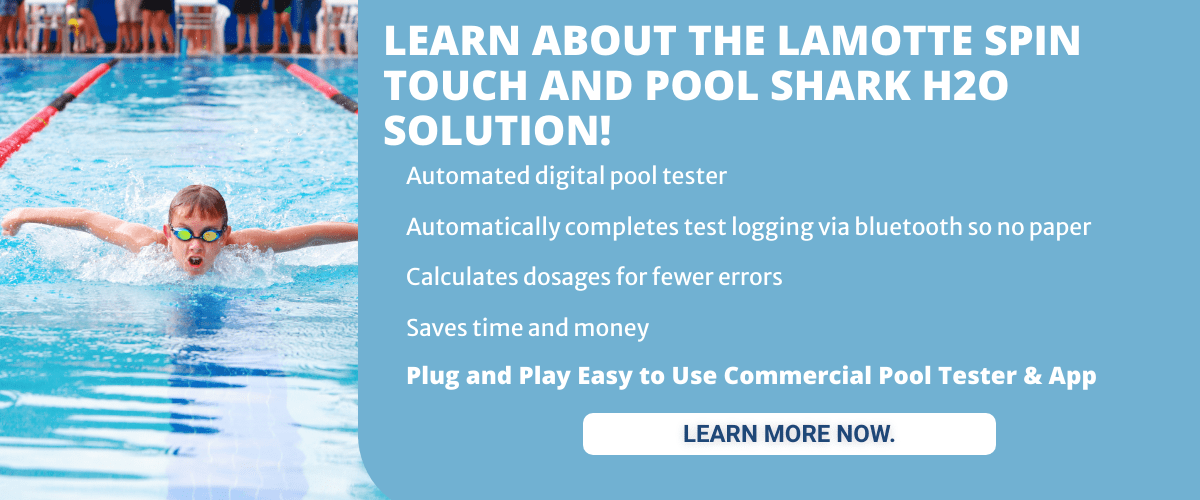
More and more commercial properties are going with a salt system. It’s “hip” and actually can be more enjoyable to the bathers. Most property owners, and maybe even some swimming pool operators, may not realize one very important fact. A salt pool is STILL a chlorine pool. You are essentially just “making your own” chlorine. There are some slightly different maintenance points you will want to focus on and obviously some additional equipment you are now responsible for maintaining.
Maintaining a Sale Pool - First Things, First
Obviously, the property will have to have a salt system installed. This consists of a board and a cell. Some popular brands are Pentair, Hayward, and Jandy. There are, as always, some “internet specials” that are off-brand available. Whether you are the installer or an outside party is involved, we cannot just dump a bunch of salt into the pool and expect it to sanitize our water.
A salt system needs to be professionally installed. The TDS of the water needs to be checked first. If the Total Dissolved Solids are too high, the body of water will need to be drained and refilled before converting to salt. The reason is, we will be increasing the TDS by approximately 3,400 ppm, depending on the brand of the salt system and the chlorine, and other chemicals, will have to struggle to find room to work. You can test your TDS and the findings will be recorded on your Pool Shark H20 App.
How Do Salt Pools Work?
Salt systems are plumbed into the return line of the equipment, A salt system contains 2 components, the cell, and the board. As the water passes through the plumbing system it makes several stops along the way. Adding a salt system is just one extra stop.
Depending on the brand you will need to establish a salt reserve to establish the proper parts per million needed to operate your specific salt system. An average 40-pound bag of pool salt will increase the salt level in the swimming pool by approximately 480 ppm per 10,000 gallons of swimming pool water. As I mentioned, most salt systems require around the mid 3,000’s. You’ll need to consult your owner’s manual for exact specifications.
As the water passes through the salt system a process called electrolysis occurs to separate the salt (sodium chloride)(NaCL) that is in the pool water. This produces…chlorine! Hooray! This form of chlorine is sodium hypochlorite and hypochlorous acid. These agents disinfect, sanitize, and even oxidize the water
Making Maintaining a Salt Pool Easier
Because of the natural oxidation of a salt system, a salt pool is less likely to develop chloramines. This means you won’t have to add chlorine throughout MOST of the year. During the winter months, when the water drops below approximately 58 degrees, you will need to manually chlorinate.
High pH
Swimming pools with a salt system tend to have a higher pH because of the form of chlorine it produces. So it is super important to test the water regularly. Your results will be automatically sent to your device by the Pool Shark H20 App and stored in your pool log. You have traded in adding tablets weekly for adding acid weekly to bi-weekly. It is important to keep the pH as close to 7.4 as possible. This prevents build-up around the edges of the swimming pool, in the plumbing, and in the salt cell itself.
Salt Cell Cleaning
Yup. With a salt pool, you have another thing to add to your maintenance to-do list. Periodically clean the salt cell. The manufacturers recommend checking the cell every 3 months to see if there is visible calcium build-up. It is super easy to clean a salt cell, though. You can buy a special cap for the end of the cell or make one yourself. Some pool operators submerge the entire cell in a bucket, but this is not recommended.
Mix 4 parts water to 1 part muriatic acid and pour into the capped-off salt cell. Wait 15 minutes. You will see it start to bubble and fizz. Rinse and flip the cell over and repeat on the other side. Never put anything metal between the plates of your salt cell. Cleaning the cell too often can also damage the plates. Not cleaning it enough could ruin the cell and void the warranty.
In a nutshell, there are only a few minor adjustments you’ll need to make if converting to or taking over a swimming pool with a salt system. As I always say…test, test, test! Your needed adjustments will be visible on your Pool Shark H20 App. Keeping a closer eye on pH and calcium in a salt pool is advisable to avoid scale. See you saltwater poolside!
More Commercial Pool Chemistry Resources
Free, vs Combined vs Total Chlorine - A Guide for Commercial or Public Pool Operators
Chlorine Shock vs Non-Chlorine Swimming Pool Shock
Why Being Able to Calculate the Volume of a Commercial or Public Swimming Pool is Important
Cyanuric Acid Levels in Swimming Pools
Ideal Alkalinity in Commercial Pools
Managing pH and Alkalinity in Pools
Commercial Pool Chlorine Management
Cyanuric Acid in Your Pool Too High? How to Remove Cyanuric Acid (Lower Pool Stabilizer)
Lowering Alkalinity in Swimming Pools
Reasons Your Public or Commercial Pool Water Could Be Cloudy
Muriatic Acid in Swimming Pools
How to Lower pH in Pools, Water Parks and Water Features
Does Chlorine Kill Poop in a Swimming Pool?
Total Dissolved Solids: When Should I Drain My Pool?
Why Pool Chemical Storage Cabinets are Important for Commercial Pools
Storing Pool Chemicals: What Commercial Pool Operators Need to Know



